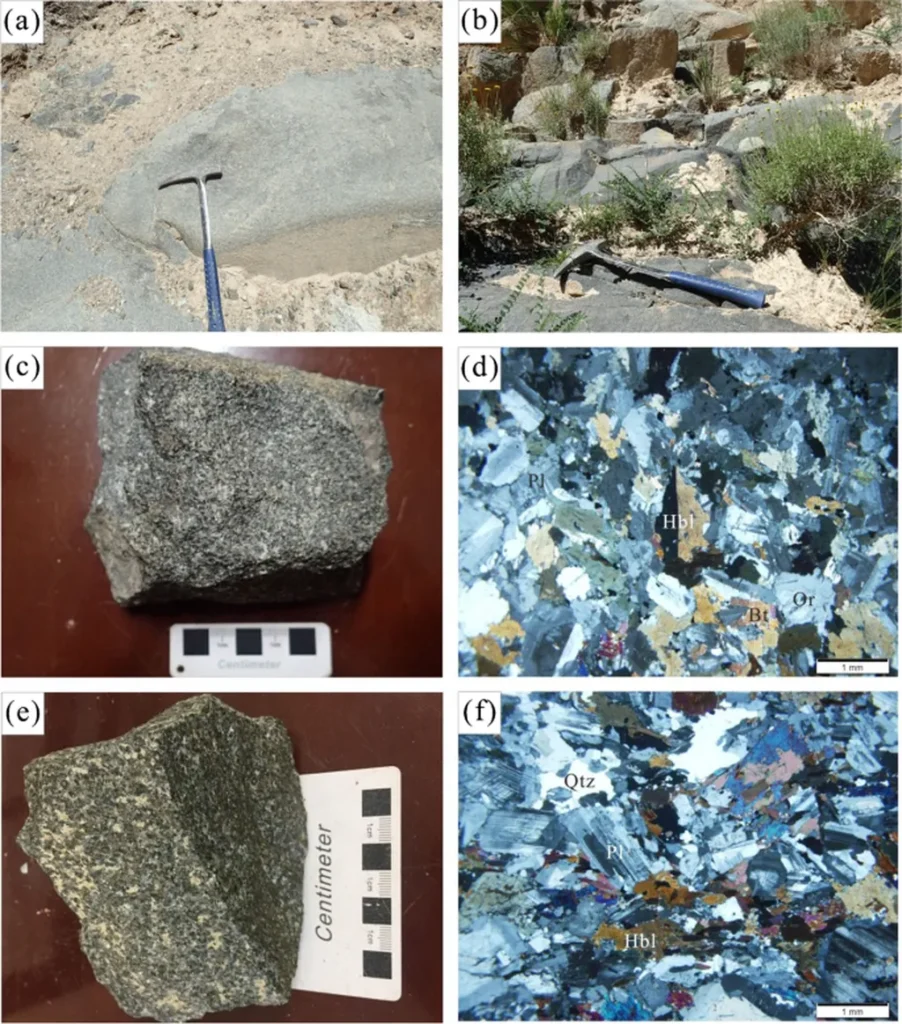In the rugged landscapes of Central Transbaikalia, Russia, a team of researchers led by Roza A. Badmatsyrenova has uncovered insights that could reshape our understanding of the region’s geological history and potentially open new avenues for the energy sector. Their study, published in *Известия Томского политехнического университета: Инжиниринг георесурсов* (Tomsk Polytechnic University Journal: Engineering of Georesources), delves into the material composition and age of the Sharagol complex gabbro-diorite massifs, shedding light on the processes that shaped the Earth’s crust in this area.
The research addresses a significant gap in knowledge about the composition and age of the gabbro-diorite intrusion in the Ungo-Khilok area. “The lack of information on the composition of rocks of the gabbro-diorite intrusion and their role in continental crust formation has been a longstanding challenge,” explains Badmatsyrenova. By employing advanced petrological-geochemical and isotope-geochronological methods, the team has provided a detailed analysis of the rock material composition and determined the time frame of the main magmatism in the region.
The study reveals that the intrusion consists primarily of gabbroids, formed through the fractional crystallization of a parent melt corresponding to high-alumina basalt. This process occurred under “hydration conditions,” involving the melting of spinel-bearing lherzolitic mantle. The U-Pb analysis of magmatic zircon from a gabbro sample of the Khorul massif yielded an age of 337 ±3 million years, dating the Late Paleozoic gabbro-diorite rocks to this period.
The findings suggest that the formation of these intrusions is linked to intraplate magmatism at the post-orogenic stage, with the participation of plume magmatism. This insight could have significant implications for the energy sector, particularly in understanding the geological processes that contribute to the formation of valuable mineral resources.
“The results of this study not only enhance our understanding of the geological history of Central Transbaikalia but also provide a foundation for future explorations in the region,” says Badmatsyrenova. The detailed analysis of the material composition and age of the gabbro-diorite massifs could guide the search for new energy resources, potentially unlocking untapped reserves that could fuel the region’s economic development.
As the energy sector continues to evolve, the need for a deeper understanding of the Earth’s geological processes becomes increasingly important. This research offers a crucial step forward, providing valuable data that could shape future developments in the field. By uncovering the secrets of the Sharagol complex, Badmatsyrenova and her team have opened a new chapter in the exploration of Central Transbaikalia’s geological heritage, with promising implications for the energy sector and beyond.

